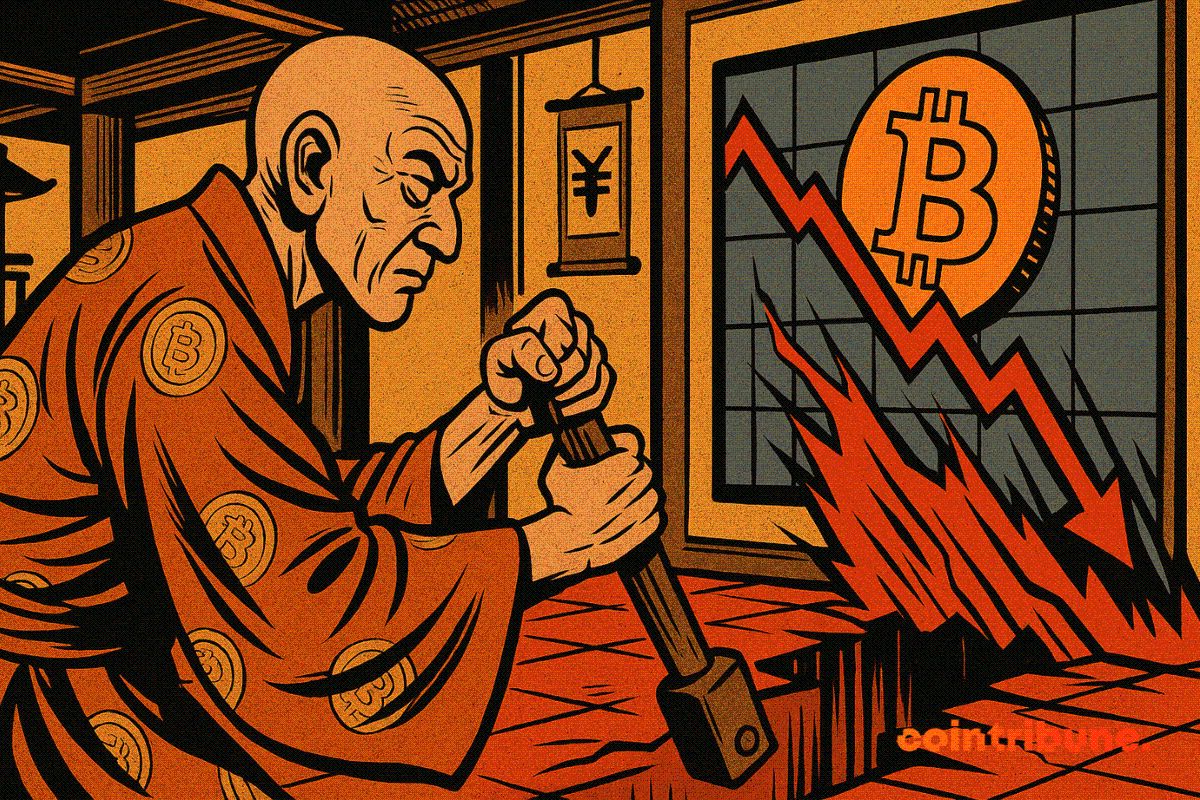On October 29, 2025, the Hong Kong Monetary Authority (HKMA) officially released the "Digital Hong Kong Dollar" Pilot Program Phase II Report. The report clearly states that the future will prioritize the development of wholesale digital Hong Kong dollars, temporarily suspending retail-level promotion, while accelerating the advancement of commercial banks' tokenized deposit businesses. Behind this decision lies Hong Kong's deep reflection in the digital finance competition: embracing technological innovation while maintaining financial stability.

1. In-depth Policy Interpretation: A New Digital Finance Ecosystem under a Two-tier Structure
Strategic Positioning Adjustment of the Digital Hong Kong Dollar
● Since the launch of the digital Hong Kong dollar project, its development path has attracted much market attention. The release of the Phase II report has finally clarified this path. According to the report, the digital Hong Kong dollar will focus on interbank settlement, tokenized asset delivery, and other wholesale scenarios, rather than the previously anticipated retail payment sector.
This shift is based on HKMA's in-depth assessment:
● In retail scenarios, existing electronic payment systems are already quite mature, and the marginal benefit of introducing central bank digital currency (CBDC) is limited;
● In the wholesale sector, however, the digital Hong Kong dollar can address multiple pain points in traditional settlement systems.
Accelerated Advancement of Tokenized Deposits
● Echoing the repositioning of the digital Hong Kong dollar, tokenized deposits are becoming another important pillar of Hong Kong's digital financial development. Currently, six banks, including Bank of China (Hong Kong), HSBC, and Standard Chartered, have launched tokenized deposit services, covering scenarios such as bond issuance, trade finance, and cross-border payments.
● These banks have accumulated a wealth of valuable experience in practice. For example, Bank of China (Hong Kong) achieved seamless integration of tokenized deposits and the digital Hong Kong dollar for the first time in the government's tokenized bond issuance. The project leader revealed: "By automatically executing settlement processes through smart contracts, we not only improved operational efficiency by 60% but also significantly reduced the risk of human error."
Improvement of the Stablecoin Regulatory Framework
● It is worth noting that Hong Kong's stablecoin licensing regime was officially implemented in August 2025, providing clear regulatory guidance for non-bank institutions to issue stablecoins. The new regulations require issuers to hold the appropriate licenses and impose strict requirements on reserve asset management, information disclosure, and on-chain monitoring.
● The HKMA particularly emphasized regulatory requirements for non-custodial wallets, requiring licensed institutions to deploy corresponding on-chain monitoring tools to ensure transaction compliance.
Comparison of Hong Kong's Digital Currency Policy Layout
Project Type | Strategic Positioning | Application Scenarios | Regulatory Requirements | Progress Status |
Digital Hong Kong Dollar | Wholesale-level central bank digital currency | Interbank settlement, tokenized asset delivery | Direct issuance and management by HKMA | Pilot with 7 banks within the year, policy preparation to be completed by 2026 |
Tokenized Deposits | Digitalization of commercial bank money | Corporate payments, trade finance, cross-border settlement | Subject to existing banking regulatory framework | Launched by 6 banks, more banks in preparation |
Stablecoin | Private institution digital currency | Public chain ecosystem, cross-border retail payments | Licensed operation required, reserve assets regulated | Licensing regime implemented, multiple institutions applying |
2. Deep Integration of Traditional and Crypto Worlds
Structural Changes in Capital Flows
● Traditional financial institutions' willingness to allocate digital assets has significantly increased. According to the latest data, the scale of digital asset custody in Hong Kong's banking sector grew by 45% quarter-on-quarter in Q3, reaching a record $12 billion. This growth mainly comes from increased demand from institutional clients for compliant digital asset products.
● The launch of tokenized deposits provides a more convenient channel for traditional funds to enter the crypto world. Corporate clients have shown strong interest in tokenized deposits, especially in cross-border trade settlement. Compared with traditional bank transfers, tokenized deposits not only enable real-time clearing but also allow for more complex fund management functions through smart contracts.
Reshaping the Crypto Market Landscape
● Under the dual influence of wholesale digital Hong Kong dollars and tokenized deposits, the competitive landscape of the crypto market is undergoing subtle changes. Stablecoin issuers are facing new challenges and opportunities. On the one hand, tokenized deposits, backed by the credit of commercial banks, have a natural advantage in enterprise-level application scenarios; on the other hand, stablecoins still maintain an irreplaceable position in public chain ecosystems and global cross-border retail payments.
● According to AiCoin data, the trading volume of institutional-grade stablecoins (such as USDC) has recently increased, while growth of retail-oriented stablecoins has slowed. This divergence reflects the market's differentiated demand for different application scenarios.
Evolution and Innovation of Technical Architecture
Hong Kong's policy choices are also driving innovation in underlying technical architecture. The integration of private and public chains has become an important trend. Banking institutions mainly conduct tokenized deposit business based on private chains to ensure regulatory compliance; at the same time, they connect with public chains through cross-chain technology to achieve asset interoperability.
This "hybrid architecture" is giving rise to new technical solutions. Multiple tech companies have launched cross-chain gateway products for financial institutions, supporting asset transfer and data synchronization across different chain environments. The HKMA is also actively participating in standards development, promoting the establishment of "common tokenization standards" to lay the foundation for future interoperability.
Comparison of Digital Financial Technology Architectures
Technical Element | Traditional Financial System | Tokenized Deposit System | Public Chain Stablecoin System |
Settlement Cycle | T+1 or longer | Near real-time | Real-time |
Operating Hours | Specific periods on business days | Close to 7×24 hours | 7×24 hours |
Programmability | Limited | Implemented via smart contracts | Implemented via smart contracts |
Regulatory Compliance | Mature framework | Existing banking regulatory framework | Emerging regulatory framework |
Cross-system Interoperability | Via traditional channels | Via cross-chain gateways | Native cross-chain capability |
3. Expert Perspectives: Opportunities and Challenges from Multiple Viewpoints
Recognition of Policy Rationality
● Blockchain financial consultant Zhou Zhuoyi pointed out: "Hong Kong's choice of the 'wholesale CBDC + retail tokenized deposit' path reflects regulatory wisdom. This arrangement leverages the advantages of central bank digital currency in the wholesale sector while fully utilizing commercial banks' experience in retail services, achieving optimal resource allocation."
Attention to Implementation Challenges
● However, international banking analyst Zhang Wei reminds us to pay attention to potential risks: "Banks need to carefully manage liquidity risk in the process of advancing deposit tokenization. Tokenized deposits may alter the traditional stability characteristics of deposits, increasing the complexity of banks' liquidity management."
Outlook on Market Opportunities
● From a broader perspective, Hong Kong's policy choices provide new opportunities for digital financial innovation. Analysts at crypto research institution TokenInsight believe: "The wholesale digital Hong Kong dollar provides infrastructure for more complex financial innovation. For example, in the field of asset tokenization, the digital Hong Kong dollar can serve as the pricing and settlement unit for various tokenized assets, driving this market toward standardization and scale."
According to industry forecasts, with the implementation of relevant policies, the scale of tokenized assets in Hong Kong is expected to exceed $100 billion within three years, covering categories such as bonds, funds, and real estate. This will bring new business opportunities to all types of market participants.
4. A Development Path with Both Opportunities and Challenges
Short-term Development Prospects
Looking ahead to Q4 2025, the market will focus on several key developments. The first is the specific arrangements for the digital Hong Kong dollar pilot with 7 banks, including technology selection, business scenarios, and scale expectations. These details will directly affect the application effectiveness of the digital Hong Kong dollar in the wholesale sector.
Medium- and Long-term Development Trends
● By 2026, as the HKMA completes policy preparations for the digital Hong Kong dollar, Hong Kong's digital finance ecosystem will enter a new stage of development. One important observation point is whether the digital Hong Kong dollar will be extended to retail scenarios to a limited extent. Although current policy focuses on the wholesale sector, technical possibilities leave room for future imagination.
● Another important trend is the expansion of cross-border applications. Hong Kong is discussing cross-border settlement arrangements for digital currencies with multiple jurisdictions. Due to its credit risk-free nature, the wholesale digital Hong Kong dollar has unique advantages in such cross-border arrangements. If relevant cooperation progresses, it will significantly enhance Hong Kong's status in the international financial system.
Potential Risks and Challenges
Despite the optimistic outlook, challenges on the development path cannot be ignored. Regulatory coordination is one key challenge. Different jurisdictions have varying regulatory attitudes toward digital currencies, which may lead to regulatory arbitrage or market segmentation. Hong Kong needs to find a balance between maintaining financial stability and supporting innovation.



